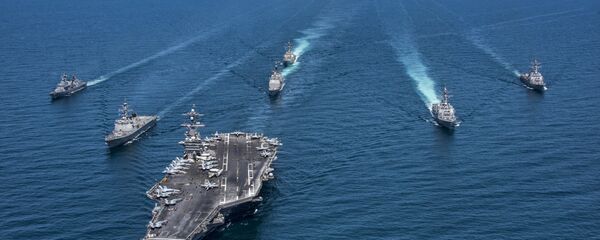New Delhi (Sputnik) — The Indian Navy is at the threshold of joining a select league of navies capable of providing submarine search and rescue in the Indian Ocean Region with two deep submergence rescue vessel (DSRV) systems scheduled for induction next year. The DSRV contracted from the British JFD will fill a major capability gap before the Indian Navy inducts the sophisticated nuclear submarines which are currently under construction.
"It (the SSN project) has kicked off. It is a classified project. The process has started. I will leave it at that," said Admiral Sunil Lanba speaking ahead of Navy Day on December 4.
Meanwhile, the new rescue system that will join the Indian fleet next year will be independent of the mothership, can locate and engage in a rescue mission more effectively, and rescue at least 16 sailors in each operation.
India signed $273 million contracts with British JFD for the supply of the two third-generation, 30-ton submarine rescue system in 2016. The contract includes deep submergence and rescue vehicle (DSRV), launch and recovery system (LARS) equipment, transfer under pressure (TUP) systems, and all related logistics and support equipment, plus a 25-year all-inclusive in-service support contract.
"The DSRVs will be ready for integration trials in December 2017 and harbor acceptance tests in January 2018. The 3rd Generation system training program for the 72 personnel has commenced, on location at the Underwater Centre in Fort William," JFD said in a statement on November 17 without identifying the Indian Navy as the recipient.
In 2013 and 2014, the Indian Navy lost two of its "Kilo" class submarine — INS Sindhurakshak and INS Sindhuratna with a large number of sailors on board. The accidents had prompted the then Navy Chief Admiral DK Joshi to relinquish his post.


